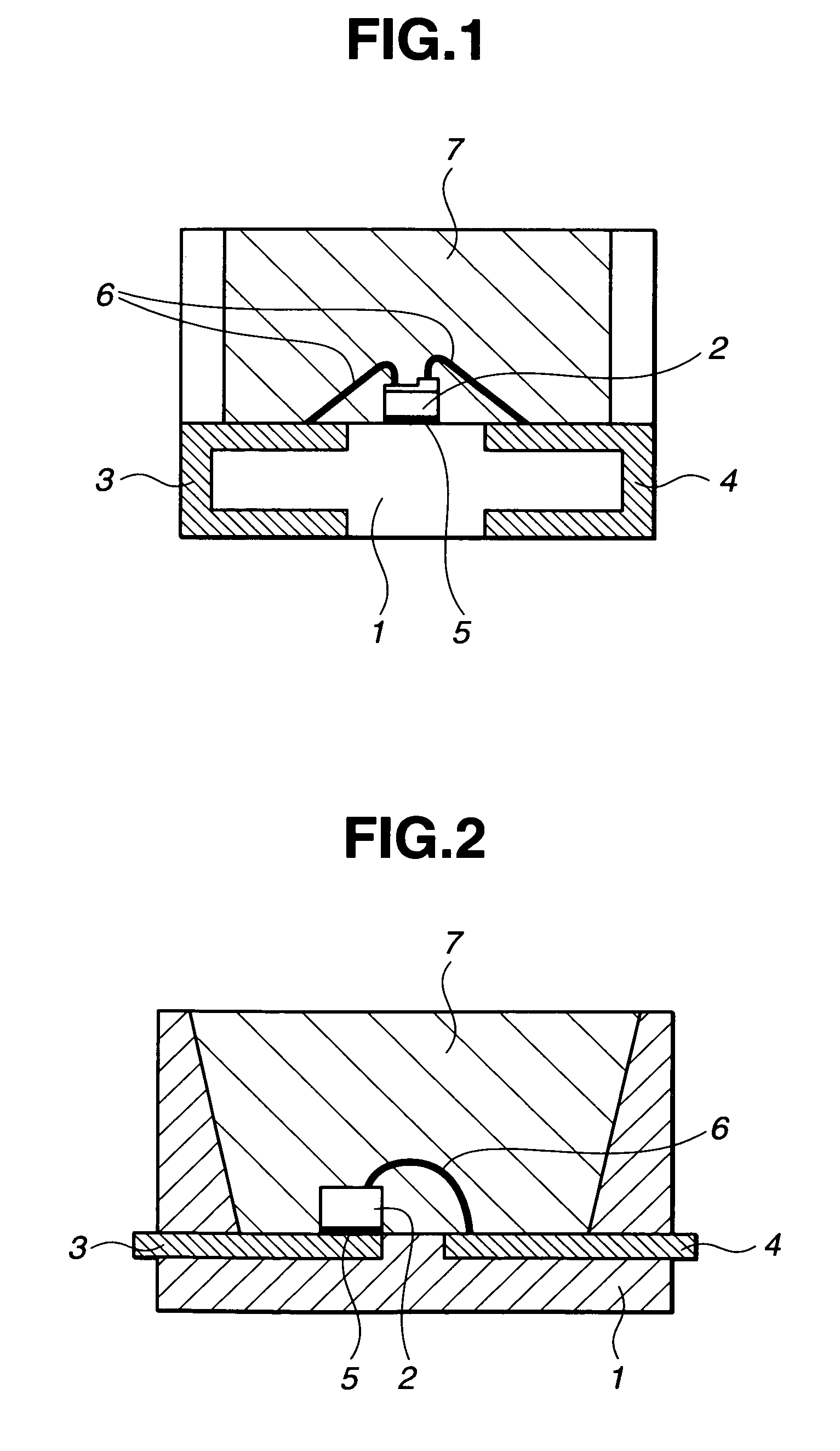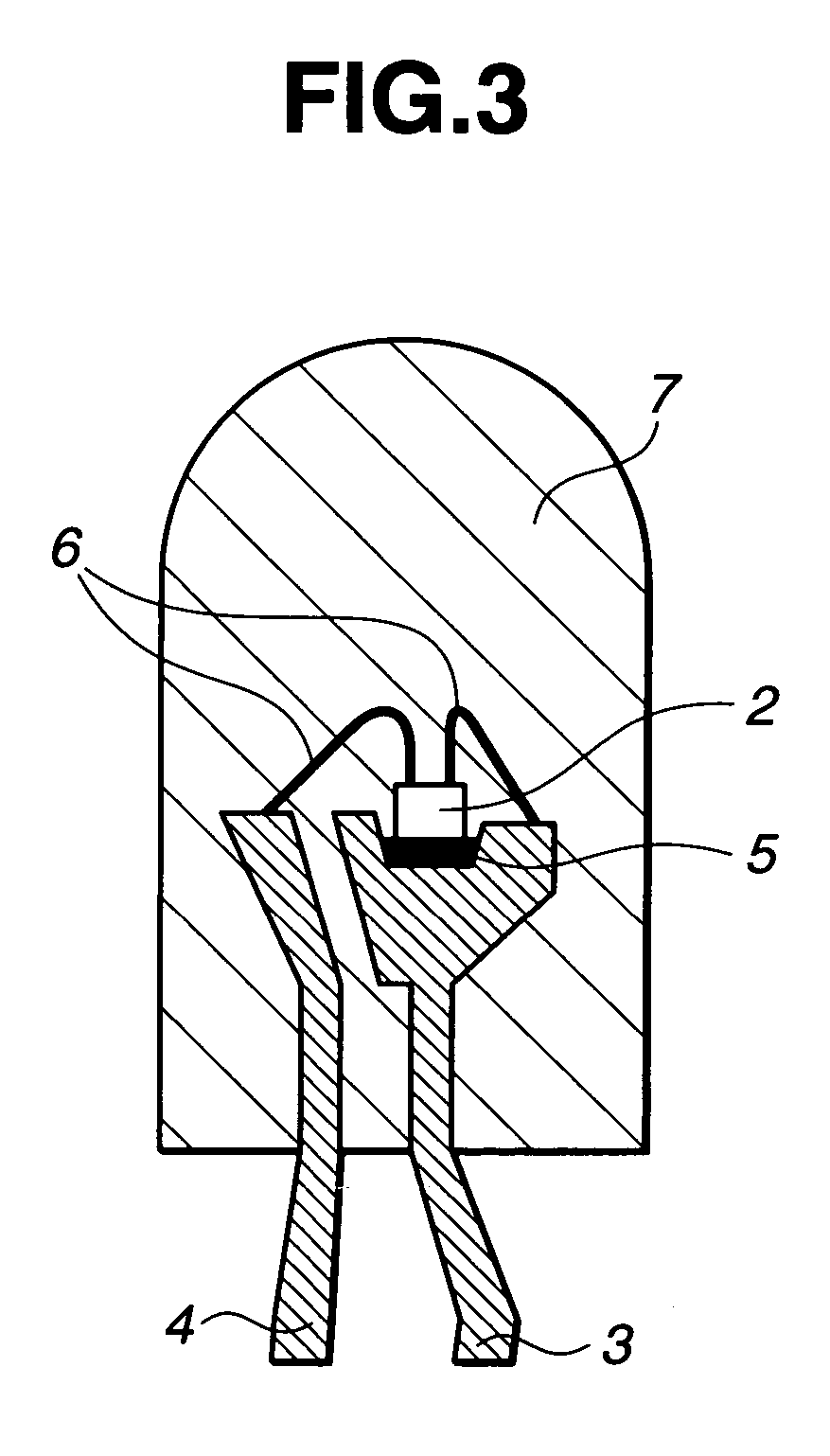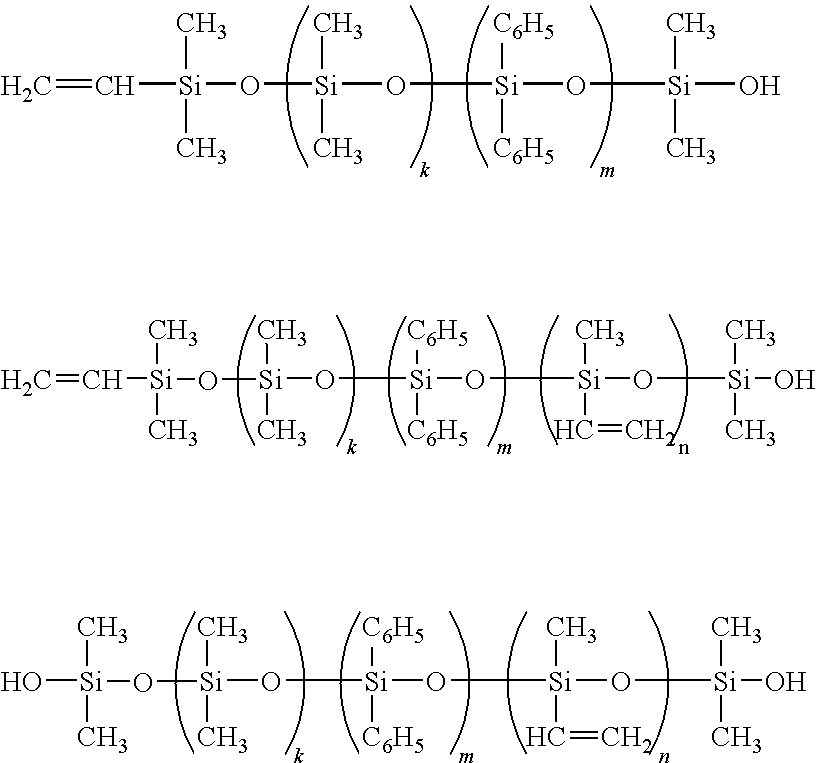Epoxy/silicone hybrid resin composition and optical semiconductor device
a technology of epoxy resin and hybrid resin, which is applied in the direction of semiconductor devices, semiconductor/solid-state device details, solid-state devices, etc., can solve the problems of loss of brittleness improvement, worse compatibility between silicone resin and epoxy resin, etc., and achieves low viscosity, high viscosity, and improved compatibility between silicone and epoxy resin
- Summary
- Abstract
- Description
- Claims
- Application Information
AI Technical Summary
Benefits of technology
Problems solved by technology
Method used
Image
Examples
example 1
[0076]An epoxy / silicone hybrid resin composition was prepared by combining 50 parts of an organopolysiloxane having the formula:
[0077]
30 parts of an organopolysiloxane comprising siloxane units of the composition (in molar ratio): (PhSiO3 / 2)0.6(MeSiO3 / 2)0.2(ViMeSiO2 / 2)0.2 and containing 2 wt % of silicon-bonded hydroxyl groups, 20 parts of a modified epoxy resin having the formula:
[0078]
wherein R is dimethylphenylsilyl and p is 6 to 7, which was obtained by modifying an unmodified hydrogenated bisphenol A epoxy resin YL7170 (Japan Epoxy Resin Co., Ltd.), 5 parts of an organohydrogenpolysiloxane of the formula:
[0079]
0.3 part of an adhesive aid of the formula:
[0080]
0.05 part of a platinum catalyst, and 0.1 part of aluminum acetylacetone, followed by thorough agitation.
[0081]The composition was heat molded at 150° C. for 4 hours into a cured part, which was measured for hardness (Shore D) according to JIS K6301. The composition as cured at 150° C. for 4 hours was colorless and transpar...
example 2
[0083]An epoxy / silicone hybrid resin composition was prepared as in Example 1 except that 80 parts of the organopolysiloxane comprising siloxane units of the composition (in molar ratio): (PhSiO3 / 2)0.6(MeSiO3 / 2)0.2(ViMeSiO2 / 2)0.2 and containing 2 wt % of silicon-bonded hydroxyl groups was solely used in place of the two types of organopolysiloxane. Using the composition, a cured part and a light-emitting semiconductor device were similarly formed and tested. The results are shown in Table 1. The cured part was colorless and transparent.
example 3
[0084]An epoxy / silicone hybrid resin composition was prepared as in Example 2 except that the modified epoxy resin was replaced by a modified epoxy resin having the formula:
[0085]
wherein R is dimethylphenylsilyl and p is 3 to 4, which was obtained by modifying an unmodified hydrogenated bisphenol A epoxy resin YL7031 (Japan Epoxy Resin Co., Ltd.). Using the composition, a cured part and a light-emitting semiconductor device were similarly formed and tested. The results are shown in Table 1. The cured part was colorless and transparent.
[0086]It is noted that the modified epoxy resin was prepared as follows. The hydrogenated bisphenol A epoxy resin YL7031 was dissolved in toluene and reacted with dimethylphenylchlorosilane in an equimolar amount to the amount of hydroxyl groups on YL7031. The hydrogen chloride resulting from dehydrochlorination reaction was removed as an amine hydrogen chloride salt by filtration. The toluene solution as filtered was washed with deionized water for re...
PUM
| Property | Measurement | Unit |
|---|---|---|
| viscosity measurement | aaaaa | aaaaa |
| viscosity measurement | aaaaa | aaaaa |
| molar ratio | aaaaa | aaaaa |
Abstract
Description
Claims
Application Information
 Login to View More
Login to View More - R&D
- Intellectual Property
- Life Sciences
- Materials
- Tech Scout
- Unparalleled Data Quality
- Higher Quality Content
- 60% Fewer Hallucinations
Browse by: Latest US Patents, China's latest patents, Technical Efficacy Thesaurus, Application Domain, Technology Topic, Popular Technical Reports.
© 2025 PatSnap. All rights reserved.Legal|Privacy policy|Modern Slavery Act Transparency Statement|Sitemap|About US| Contact US: help@patsnap.com



